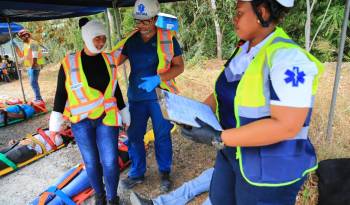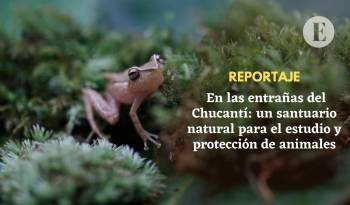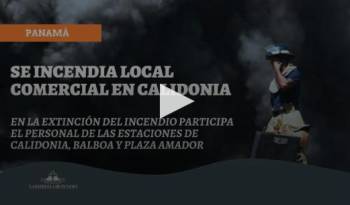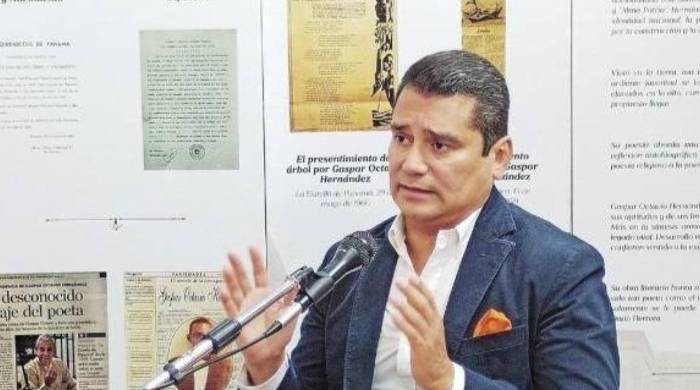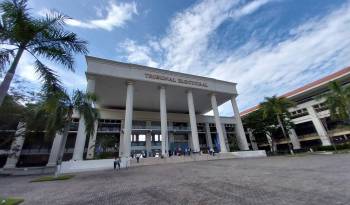Concesionaria Madden Colón llevó a cabo un simulacro de accidente sobre la autopista como fase final del Curso de Formación de Brigadas de Emergencias,...
- 07/03/2009 01:00
- 07/03/2009 01:00
We’ve all heard the phrase, “So close, but yet so far away”; which by the way originated during the US Civil War between the States when bales of cotton would be stacked close together, so the enemy would face a seemingly impregnable barrier.
Well, that phrase couldn’t be any more accurate than describing quaint little Isla Taboga; which I’ve heard much about and finally visited a short time ago. To me, it was always an intriguing place, but unfortunately more than a taxi drive away. So therefore, it wasn’t a realistic destination that fit with my hectic schedule.
It wasn’t until I met a new friend of mine, Monarch, that the thought of traveling to the close but seemingly far away island became a real desire. As we were sitting last month in the Café Havana in Casco Antiguo enjoying one of the best mojitos on this planet, she enthusiastically introduced me to the finer aspects of the garden paradise only 20km offshore and less than an hour ferry away.
But, being a previous New Yorker with an engrained mentality that whatever someone needs should be attainable within a 5-block area of where they reside, the thought of traveling over an hour by boat just to see some pretty flowers was becoming a tough sell. And, oh by the way, that was just one way. Another hour would be needed for the return trip. My mind started to race. What if I get bored because there are not enough things to keep my interest? What if there are no quality restaurants? What if it rains? What if I miss the last ferry back and I have to stay the night? Will there be an available hotel room? What then? Should I make reservations just in case? No. The whole notion of visiting this seemingly far away island was becoming a big hassle.
Being the clever person she is and knowing how much I enjoy historical places such as Casco Viejo, Monarch ordered another round of mojitos and started to relieve my concerns by filling me in on the fascinating past of the scenic island? a place she was very passionate about.
Over the next half-hour I learned that Taboga was founded in the XVI Century by the Spaniard Sancho Clavija and that the island's original name was "Aboga", which means "an abundance of fish". She also told me that Taboga is surrounded by several other islands, including Isla Taboguilla, Isla Urava, and Isla El Morro and that they were a small group of more than a thousand islands found within the Gulf of Panama. Then with a big smile Monarch began to enlighten me about the picturesque pueblo of San Pedro and how small eateries and shops line its main street and continue down some of its constricted paths too narrow for automobiles.
With my concern about finding adequate restaurants successfully satisfied, Monarch launched herself onto the main reason why Taboga is known as “The Island of Flowers” by reciting a list of floral species that are abundant throughout much of the island, such as lianas, bromeliads, orchids and ferns; along with a host of fruit trees that include nisperos, mameyes, nance, mango, tamarind and pineapple.
Finally, she appealed to my love of fishing and expounded upon the fact that Isla Taboga is world famous for its sport fishing and that the majority of its roughly 1000 inhabitants make their living from the sea. Some of the prized trophy fish caught off its shores are Amberjack, Pacific Sailfish, Black Marlin, Yellowfin Tuna, Wahoo, Cubera Snapper, Blue Marlin, Corvina and Roosterfish.
Then with a twinkle in her eye, Monarch added that the dazzling skyline of Panama City can be easily observed at night anywhere on the island and when there is a full moon the island lights up with a special air of romance. As things happen, it rained the day I visited the island, so I never got to experience what she described. However, blooming flowers were everywhere and the food was very tasty.
Rob Kircher is marketing and advertising specialist, writer and filmmaker













